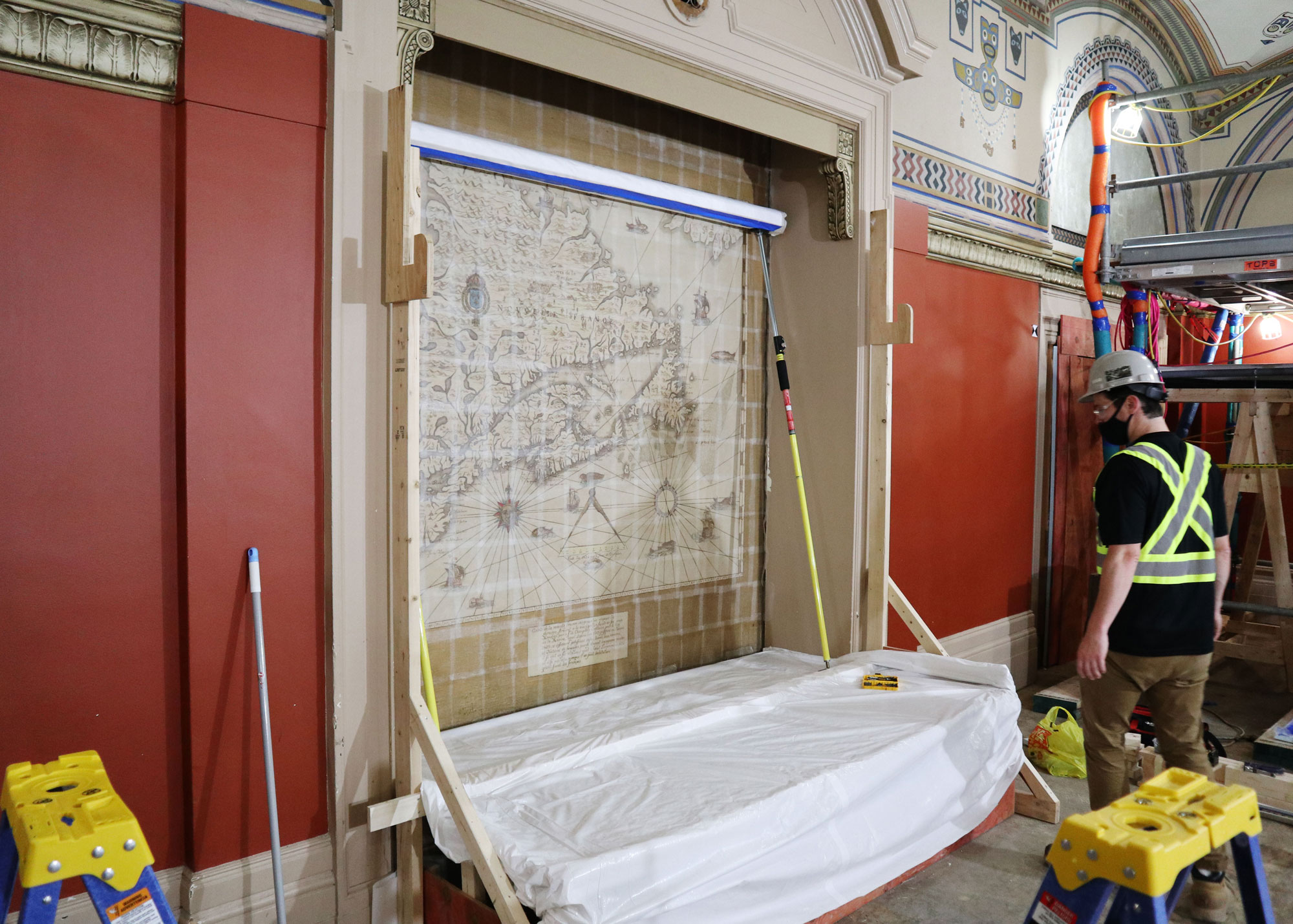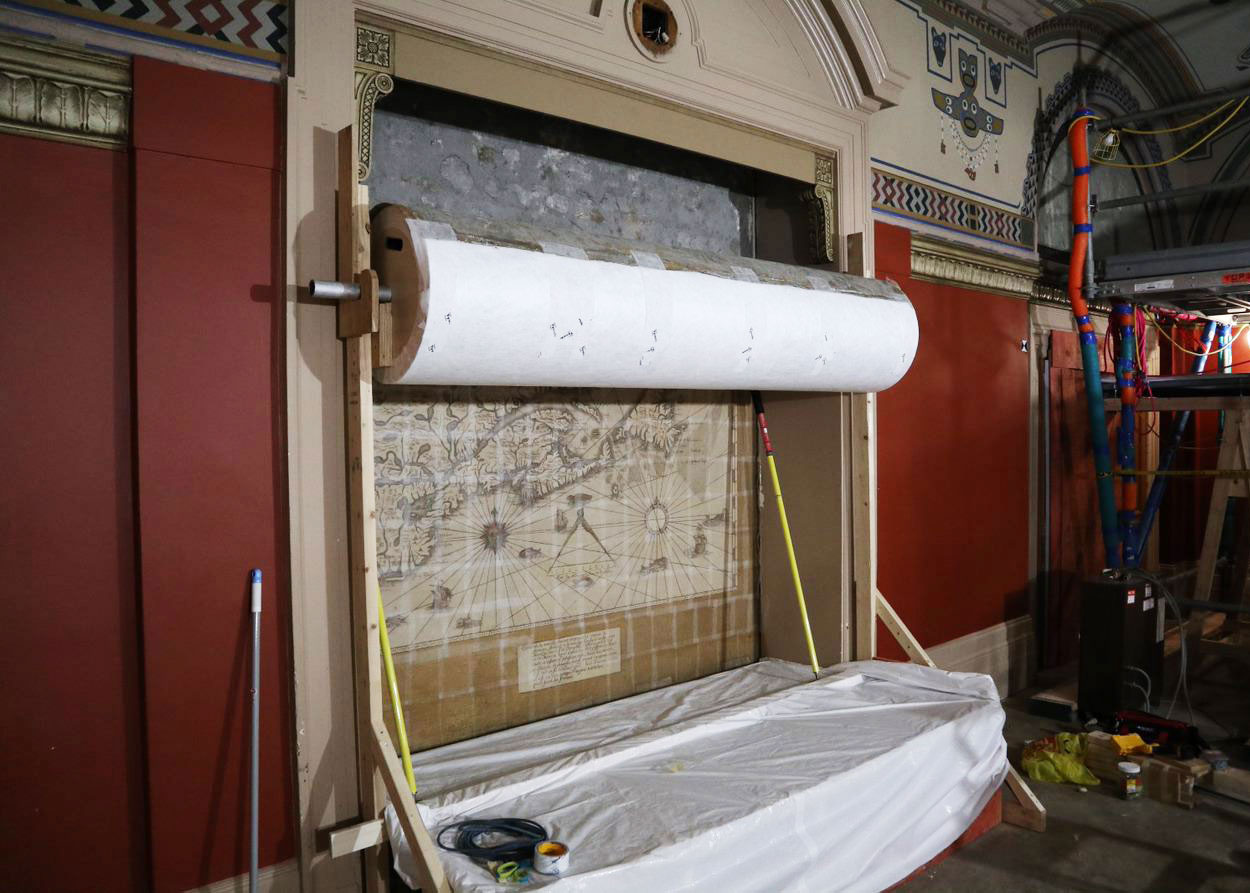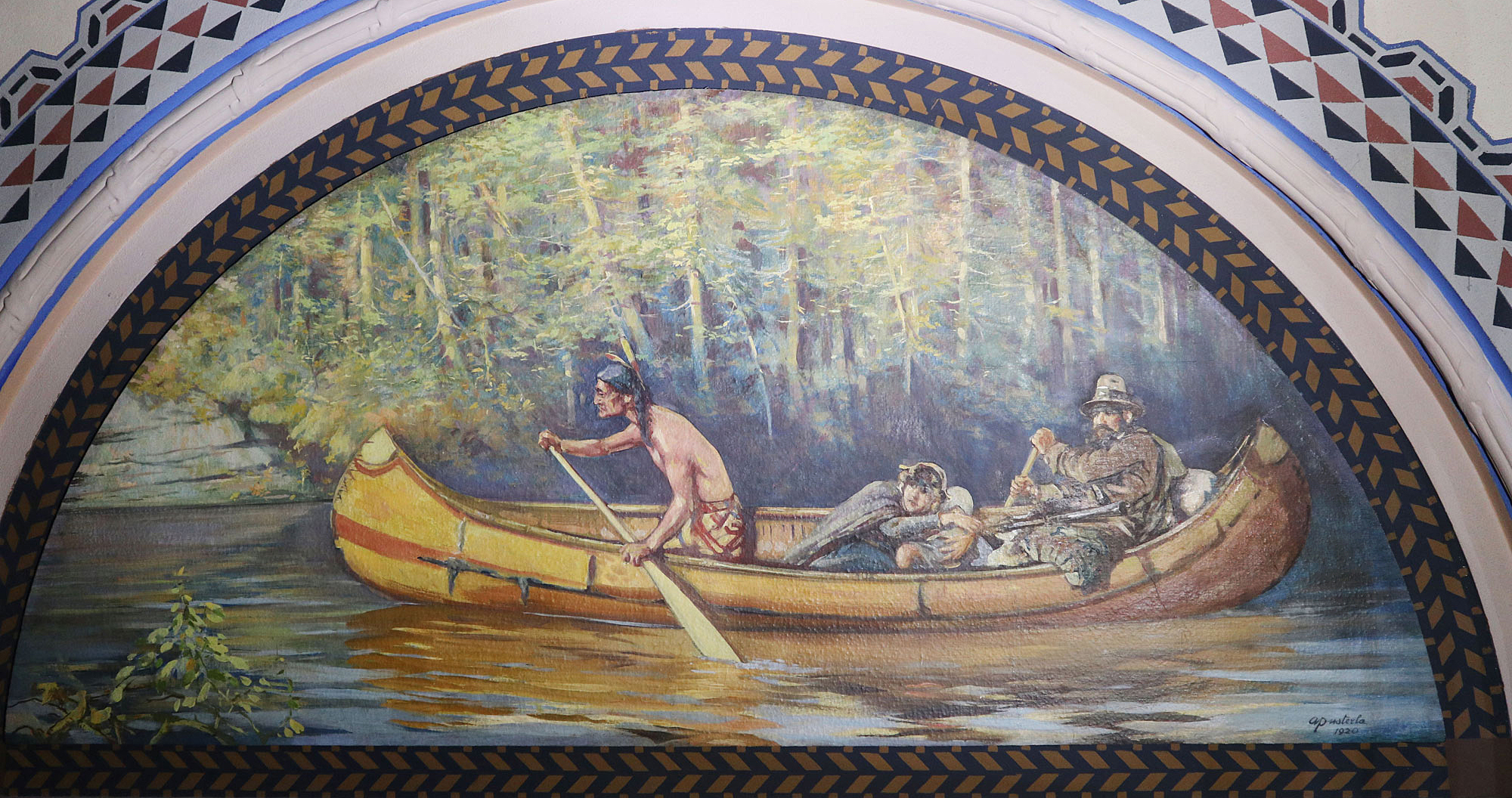En Route: Murals celebrating Canada’s transportation history temporarily leave Centre Block

In February 2019, the Senate moved to the Senate of Canada Building, a former train station built in 1912. The Senate will occupy this temporary location while Parliament’s Centre Block — the Senate’s permanent home — is rehabilitated.
Although Centre Block is shuttered for rehabilitation work, Canadians can still experience its art and architecture through the Senate’s immersive virtual tour.
Glued to the walls of Centre Block a century ago, 10 murals celebrating Canada’s transportation and commerce history aren’t sticking around during Centre Block’s rehabilitation.
The Senate Railway Committee Room (also called the Senate Banking, Trade and Commerce Committee Room) is known for its thematic murals celebrating commerce and modes of transportation from the 1920s.
At least nine of the murals were done by Attilio Pusterla, an Italian painter from Milan who immigrated to the United States around 1900. Mr. Pusterla depicted the humble daily life of early-20th-century Canadians. There are scenes of a lumberjack, fisherwoman, miner and farmer. Images of ships, trains, canoes and zeppelins are set against the backdrop of various Canadian landscapes. A map of New France (the only piece not signed by the artist) rounds out the collection.
 One of the murals by Attilio Pusterla, unofficially called Train Station, is rolled onto a formwork tube as it is removed from the walls of the Senate Railway Committee Room in Centre Block. (Photo credit: Legris Conservation Inc.)
One of the murals by Attilio Pusterla, unofficially called Train Station, is rolled onto a formwork tube as it is removed from the walls of the Senate Railway Committee Room in Centre Block. (Photo credit: Legris Conservation Inc.)
“You don’t see a lot from that time depicting scenes of Canada like that,” said David Legris of Legris Conservation Inc., whose team removed the murals from the room to ensure they are protected during Centre Block’s rehabilitation.
Equally rare is the way the century-old murals were attached to the wall.
“The murals are marouflage, which means they are canvas glued onto a plaster wall,” Mr. Legris said.
The Legris team used scalpels and spatulas to separate the glue from the wall.
“The adhesives were quite old and dried up, so it actually was not too difficult,” said Mr. Legris.

The bigger challenge was the location of many of the murals—the top of the room’s soaring walls.
After installing scaffolding in the entire room, the team built a custom support allowing murals to be released directly onto a formwork tube—a cardboard cylinder typically used in construction.
“As we released the edge of the mural, it was directly attached to the tube and we just slowly work our way and rolled it off the wall,” Mr. Legris said.
Significant artwork has also been removed from other Senate spaces including the war paintings in the Senate Chamber and the linen ceiling in its north gallery.
More than 20,000 heritage assets like these murals are being restored and preserved as part of the Centre Block rehabilitation project—the largest, most complex of its kind ever undertaken in Canada. Built in 1920, this iconic Canadian building needed major work to bring it up to modern standards.
The Senate Railway Committee Room is one of 50 heritage rooms that are being restored, all of which contain irreplaceable works of Canadian art.
Once removed from the room’s walls, the paintings were unrolled face down onto a clean sheet, rerolled and transported to storage. The entire process took about two weeks.
The murals in the Senate Railway Committee Room are in good shape — they were restored in place two decades ago — but they will likely undergo some cleaning.
“A cleaning typically removes first a layer of grime, which is just environmental grime that builds up,” Mr. Legris said. “Underneath that grime, you’ll have old varnishes which can often yellow. It can be quite disfiguring to the artwork, so we’ll remove that as well.”
The next question will be how to remount the murals in the rehabilitated space when the time comes.
Options are still being considered, but a popular contemporary approach is to mount artwork on removable supports, so they can be taken down again if necessary.
“If there are any problems or any reason they need to come out, it’s just really nice not to have to go through the process again,” Mr. Legris said.
 A crew preps the mural of a map in the Senate Railway Committee Room for removal. The scaffold system to remove the murals that were glued to the top of the walls can be seen to the right. (Photo credit: Legris Conservation Inc.)
A crew preps the mural of a map in the Senate Railway Committee Room for removal. The scaffold system to remove the murals that were glued to the top of the walls can be seen to the right. (Photo credit: Legris Conservation Inc.)
 The mural of the map is rolled onto a custom support during the removal process. (Photo credit: Legris Conservation Inc.)
The mural of the map is rolled onto a custom support during the removal process. (Photo credit: Legris Conservation Inc.)
 This mural by Attilio Pusterla is unofficially called Figures in a Canoe. (Photo credit: Legris Conservation Inc.)
This mural by Attilio Pusterla is unofficially called Figures in a Canoe. (Photo credit: Legris Conservation Inc.)


